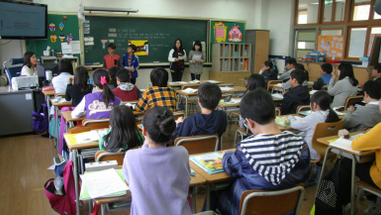7th Nov 2023
How to use technology in the classroom
Technology provides instant accessibility to information, which is why its presence in the classroom is so vital. Smart phones, computers, and tablets are already an omnipresent element of everyday life for students and teachers alike. It’s only natural that the use of technological devices in the classroom are explored to create meaningful learning experiences for students of all ages. Utilizing different types of technology in the classroom, including a virtual classroom, creates learners who are actively engaged with learning objectives. The implementation of technology also creates pathways for differentiated instruction to meet the unique needs of students as individual learners within a broader classroom climate.
WHAT DOES TECHNOLOGY INTEGRATION MEAN IN EDUCATION?
Integration of technology in education simply refers to the use of technology to enhance the student learning experience. Utilizing different types of technology in the classroom, including a virtual classroom, creates learners who are actively engaged with learning objectives. The implementation of technology also creates pathways for differentiated instruction to meet the unique needs of students as individual learners within a broader classroom climate.
HOW TO INTEGRATE TECHNOLOGY IN THE CLASSROOM
There is a common misconception that the integration of technology in the classroom can be a financial burden for school, but students do not necessarily need their own tablets or laptops to succeed with technology. The use of technology during whole-class instruction can foster student engagement for auditory and visual learners. Integrating simple technologies Power Points, games, internet homework assignments, or online grading systems can be difference makers in students' growth in the classroom.
Power Points and Games
Powerpoint presentations can be used to introduce a classroom concept while providing the opportunity for engagement. Along with the use of graphics and bulleted information, links to videos that accompany the ideas presented in the powerpoint can be embedded within the slides.
Educational apps in the classroom can be used to review information after a lesson or unit. Teachers can create and share the apps with one another while students can create anonymous user names to participate in the game. This allows for whole-class participation from students who may usually be reluctant to participate in class. Educational apps is accessible to play on phones or computers and teachers can determine if they want students to work independently or be assigned to teams.
Internet Homework Assignments
Posting homework assignments online (via learning platforms like Blackboard, and Moodle) is one way many teachers can begin to integrate technology in the classroom. Assignments are easily accessible, which can increase student engagement and help students become more organized.
Online Grading Systems
Communication is a key element in education that helps teachers, administrators, parents, and students recognize a student’s strengths and areas for improvement. Online grading systems open and facilitate lines of communication where teachers can post grades, analyze student attendance patterns, and manage transcript data.
Classroom Tablets
For classrooms that are fortunate enough to have tablets for students, technology can allow teachers to implement differentiation throughout instruction. Students can work at their own pace during assignments and teachers have the opportunity for one-on-one instruction.
Classroom Wireless Microphones and Audio Systems
